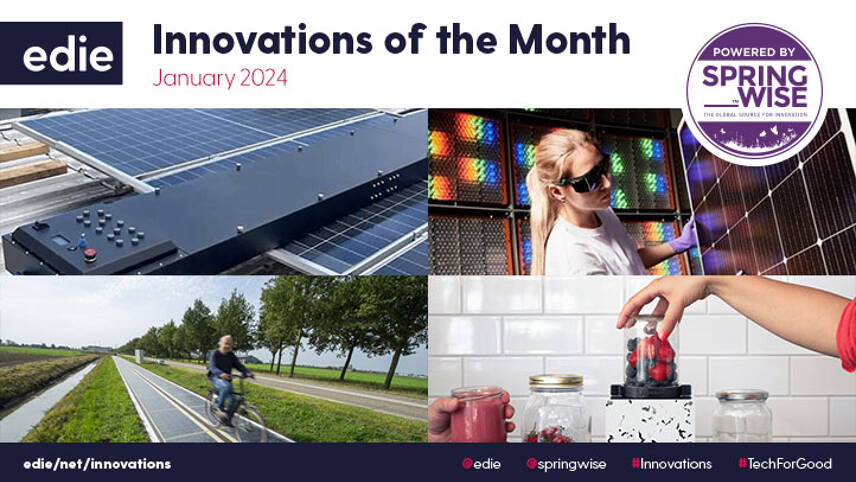Solar panel breakthroughs and sensors fighting food waste: The best green innovations of January 2024 – edie.net
In 2023, around three-quarters of global renewable energy capacity additions came in the form of solar power, and the International Energy Agency (IEA) forecasts that this energy source will continue to account for the lion’s share of new renewable energy capacity to the end of the decade.
Improvements in the efficiency of solar power are, therefore, a big deal. Our first innovation this month is a next-generation solar panel that has set a new standard for solar conversion efficiency. Elsewhere, another startup is focused on solar panel performance in a different way – it has developed a technology that rejuvenates old solar panels, mitigating degradation from wear and tear.
Other innovators are looking to optimise solar power in different ways. Our third innovation is bringing solar power to underutilised commercial spaces through panels that can withstand being walked, driven, and cycled on. Meanwhile, solar cells could also provide power indoors, and our fourth innovation is a new type of ‘double-sided’ solar technology that is being used to create battery-free connected devices.
Sticking with the theme of electronic gadgets, many household appliances are not designed to be repaired, but our fifth innovation, a modular kitchen blender, is bucking this trend. And in today’s world, electronics can turn up in unlikely places. Our final innovation is an oxygen sensor that can be printed onto food packaging to help prevent food waste.
A world record for solar panel efficiency
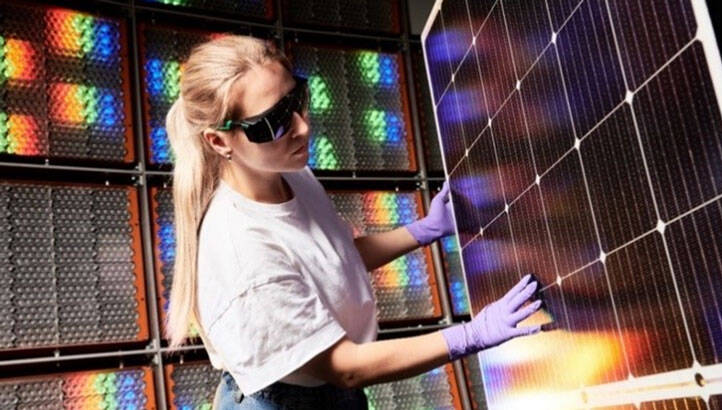

Image: Fraunhofer Institute for Solar Energy Systems
In most parts of the world, utility-scale solar power systems are the cheapest option for new electricity generation, and there remains scope to squeeze even more power out of solar panels. This is because the panels in commercial use today fall short of the technology’s theoretical maximum efficiency.
Now, UK solar pioneer Oxford PV has teamed up with the Fraunhofer Institute for Solar Energy Systems to deliver a new tandem solar panel that sets a world record for efficiency – an important milestone in the development of both solar power and the energy transition more broadly.
The next-generation panel achieved a record 25% conversion efficiency – a measure of the proportion of the sun’s energy hitting a panel that is actually converted into electricity. Most commercial panels today are only capable of hitting a conversion efficiency rate of 24% at most.
Oxford PV’s panels are described as ‘tandem’ because they are made up of a layer of ‘perovskite cells’ on top of standard silicon cells. A perovskite solar cell is a thin film device made from a compound that has a specific crystal structure. The technology holds much promise for the future of solar generation, and Oxford PV’s ‘perovskite-on-silicon’ tandem cells have a theoretical maximum efficiency of over 43%. This is much higher than conventional silicon cells, which have a maximum efficiency of less than 30%.
Tech to ‘rejuvenate’ ageing solar panels
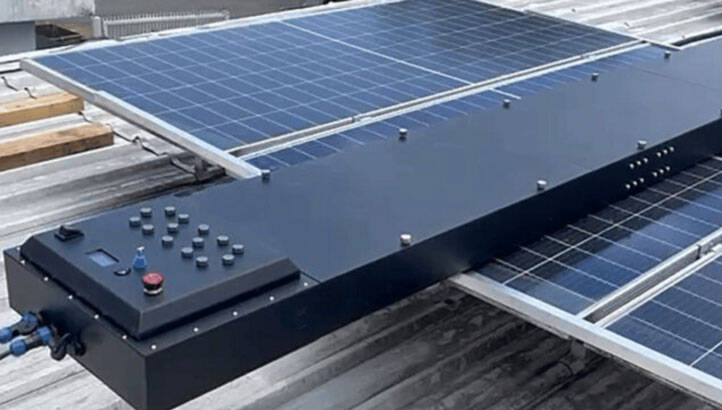

Image: EtaVolt
Solar panels lose efficiency over time, at a rate of around 0.5 % annually. This means that after 20 years, a panel has lost 10% or more of its electricity generation capability.
These losses occur due to factors such as panel quality, weather and maintenance. There is currently no commercially available and cost-effective way to restore a panel’s performance.
Now, however, Nanyang Technological University spinout Etavolt has developed a new technology that rejuvenates solar panels and protects them from degradation.
The company’s device automatically rolls over a panel, applying intense light and controlled temperature as it goes. This causes the molecules in the solar cells to excite and “patch up the holes caused by light and heat damage”. The team likens the technology to patching holes in a bucket, preventing energy leakage and ensuring optimal light energy collection.
According to the spinout, the rejuvenation process takes less than five minutes and can help treated solar panels recover up to 5% of their lost field performance.
Solar you can walk (or cycle, or drive) on
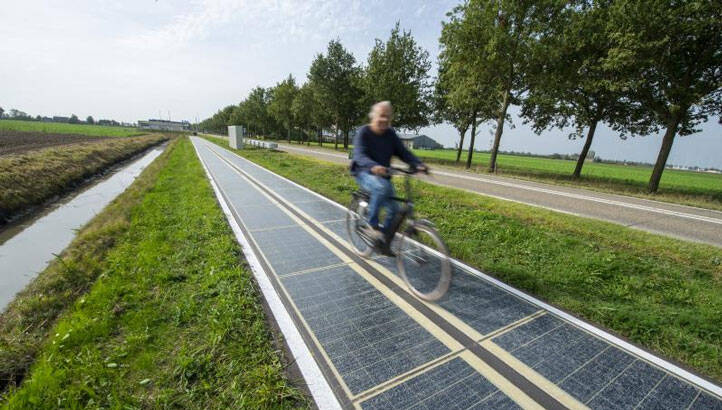

Image: Colas/Wattway
In its first meeting, the UK’s Solar Taskforce highlighted the “untapped potential of commercial sites for solar.” What many commercial sites have in common is their provision of walkways and car parks for public use. Those areas could be valuable producers of renewable energy, as demonstrated by an innovation created by French infrastructure construction company the Colas Group and INES, the French National Institute of Solar Energy.
The organisations have created a subsidiary, Wattway, to market a solar energy system that can be walked, biked, and driven on. Called the Wattway Pack, the turnkey system provides solar panels, an electrical storage cabinet, and a connection to a device needing power.
The photovoltaic road surface requires nothing more than glue to attach it to paved areas, and the surface of the panels is treated with a solution to provide the same grip as a regular road.
In December 2023, a new Wattway project was announced in collaboration with Dutch construction company Royal BAM Group. There are over 35,000km of cycle paths across the Netherlands, and the two companies hope to take advantage of this fact by
commissioning two ‘solar-powered’ cycle lanes across the North Brabant and North Holland provinces in the country. The goal is for the paths to generate at least 160MWh of electricity for the Dutch grid in the first year.
Double-sided solar that can generate indoors
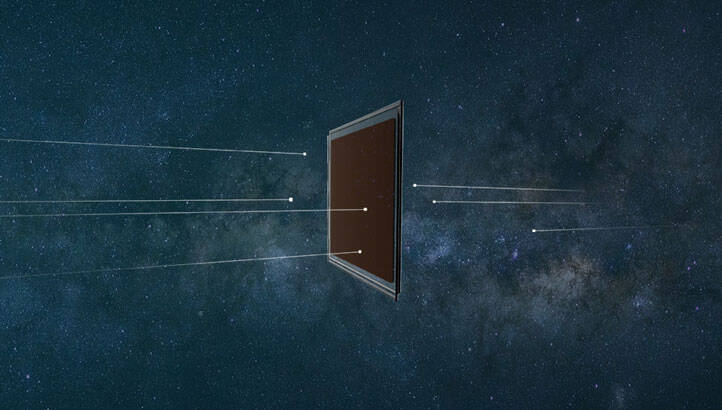

Around the world, connected devices such as occupancy sensors and electronic shelf labels are proliferating in both domestic and commercial settings. In fact, there is potential for billions of new wireless sensors to be installed over the coming decade, with nearly half located within buildings.
In the absence of solar cells that produce sufficient power in low indoor light levels, most ‘smart’ devices today are powered by batteries, which creates waste and incurs regular maintenance costs as batteries must be periodically replaced.
Now, US startup Ambient Photonics is addressing this problem through low-light energy harvesting technology that can power electronic devices at competitive prices. The company’s solar cells are described as ‘bifacial’ because they can harvest light from both sides. This means the cells can harvest more energy, which boosts their efficiency and makes them suitable for higher-power electronics.
The cells are manufactured using a breakthrough industrial printing process. As a result, they can be made to order for high-volume electronic device manufacturers.
Ambient this month announced that it is partnering with Google to develop a ‘consumer product’ that will be the first to use the startup’s battery-free indoor solar cell technology.
Kitchen mixers designed for repairs and upgrades
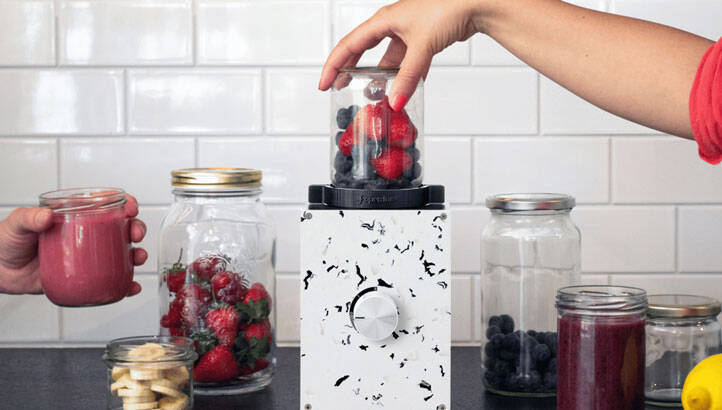

Image: Open Funk
The electronic devices and appliances industry contributes significantly to global waste with products often not designed to be repaired. Now, however, German startup Open Funk is changing this.
The company has created a blender, called Re:Mix, which has a customisable casing and is made from 100% recycled plastic. The device is made up of modular components to enable the easy repair and upgrading of parts – either at the company’s Berlin workshop or at home. At-home repairs like this are possible thanks to the device’s open-source design.
The blender works with any of a customer’s standard twist-off glass jars, provided they have the right-sized opening. And if a customer no longer wants their Re:Mix, Open Funk will buy it back for refurbishment and resale.
The idea for Open Funk came when co-founder Paul Anca attempted to fix a blender that had broken within months of purchase. Unable to carry out the repairs himself, and determined not to add to the millions of tonnes of e-waste that is generated each year, he took it to a repair shop and was quoted €50 “just to have a look at it.”
Spurred on by this unsatisfactory experience, Anca and his co-founder Ken Rostand devoted themselves to understanding how blenders are put together and why they break.
Crowdsourcing broken blenders from Facebook, the pair discovered that the root of the problem lay in cheap materials and the gluing together of components for rapid assembly. The result of their inquiries was Re:Mix, which is made to be repaired and upgraded, with parts replaced over time.
Packaging sensors to fight food waste
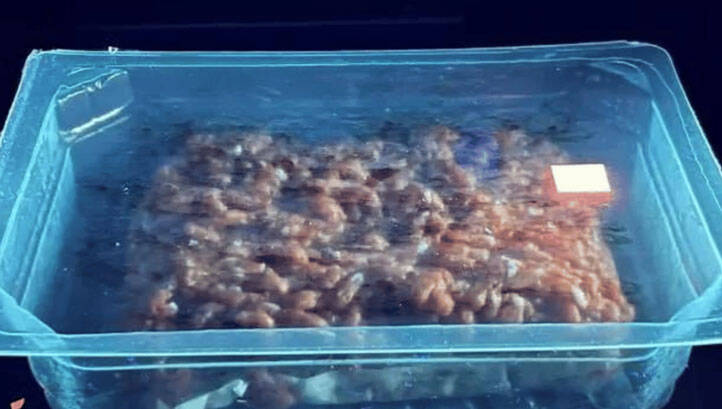

Although 8.4 million people in the UK live in food poverty, the country has the highest level of food waste in Europe, throwing out 9.5 million tonnes of food in a single year.
To tackle this challenge, Trinity College Dublin spinout Senoptica has developed oxygen sensor technology for food packaging. Using a patented food-safe ink, the sensors are printed directly onto the lidding film of modified atmosphere packaging – a kind of packaging used for products like meat.
Using an in-line scanning system, the sensors can be scanned at any point in the supply chain, generating real-time readings and improving the probability of finding failed packs by up to 11,000 times. The technology can also be used to inform strategic price markdowns.
By making it easier to check products and identify packaging issues, the startup hopes to reduce food waste by 1.5 million tonnes, which is equivalent to 34 million tonnes of carbon dioxide.
Springwise is the global innovation platform for leaders looking to drive positive and sustainable change. To discover the areas of innovation where there is momentum for positive change, download the latest Springwise report, Horizon 2030, today.
This post was originally published on 3rd party site mentioned in the title of this site

